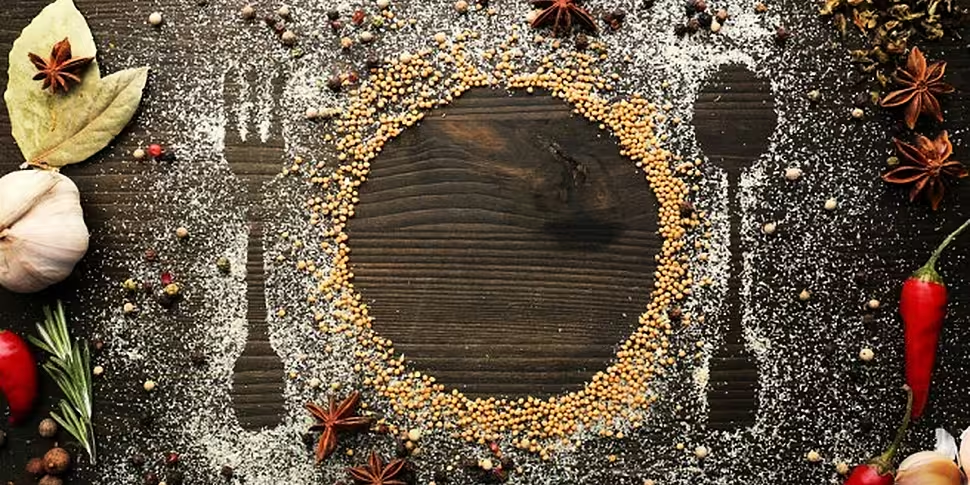The way we enjoy shared dining experiences has evolved enormously over time. We take it for granted now but why do we eat our meals sequentially, from starter to main to dessert? And how did we end up with the breakfast, lunch and dinner structure?

Napoleon taught us how to eat
Before Napoleon, Service a La Francaise was the customary way of serving food. This involved the serving of multiple dishes at the same time, according to the New York Times. Toma Haines explains in Bonjour Paris that Napoleon adopted the course-by-course format while he and his armies were in Russia in the early 19th century. He then brought this innovation back to France where it took off like wildfire. Service a la Russe describes the way we eat now: a succession of different dishes served one after another.
Service a la Francaise was a very different way of dining. The way it worked was dictated by the French court and was essentially a giant buffet. ‘Buffet’ is French for sideboard, on which was placed an enormous variety of foods which guests could pick at. It was spectacular to look at and reached its zenith during the Ancien Regime when the various Louis were famous for their indulgence, which this type of dining allowed. However, Service a la Francaise was not an effective way of eating a meal because hot dishes went cold, sauces developed a film of scum, soft food turned crusty and it was, of course, wasteful, because the dishes were not associated with specific recipients. It was a free for all.
Inevitably, Service a la Russe led to a much clearer differentiation between the types of food that we eat at different stages of a meal. For example, the origin of the term ‘dessert’ tells us a lot about the structure of a meal. Culinary historian Michael Krondl writes in his book Sweet Invention: A History of Dessert, ‘the French noun dessert originates with the verb desservir, or ‘un-serve’, that is, to remove what has been served. In other words, le dessert was set out once the table had been cleared of the dishes that made up the main part of the meal.”
Three meals a day

The three part structure of breakfast, lunch and dinner, which we are accustomed to in the West, hasn’t always existed in its current form. According to food historian Ivan Day, the word ‘breakfast’ came into use during the Middle Ages when people would break their fast after a night’s sleep. Before this time the meal didn’t exist in formal terms. However, breakfast was deeply frowned upon by the Catholic Church. In her book Breakfast: A History, Heather Arndt Anderson says that a 13th-century Dominican priest named Thomas Aquinas described breakfast as ‘praepropere’ - this term describes the sin of eating too soon in the day, the sin of gluttony. It was presumed that if one ate breakfast then they were predisposed to other lustful gluttonies such as sex and alcohol consumption.
Lunch
Lunch remains a confusing meal, according to Denise Winterman of the BBC, because many people, especially in rural areas, eat their ‘dinner’ at lunchtime. The etymology of the word tells us a bit more about this meal. She writes, ‘One theory is that it's derived from the word "nuncheon", an old Anglo-Saxon word which meant a quick snack between meals that you can hold in your hands’. The ‘nun’ part of the word derives from the fact that this meal happened around noon. But where did the ‘l’ in lunch come from? No one seems to know!
Dinner

The notion of dinner being a night time meal is a relatively modern concept. In fact, it describes the main meal of the day but its timing has been pushed further and further back in the day through history. The word comes from the French ‘diner’, meaning to dine. However, this verb has its origins in the Latin word ‘ieiunare’, which means ‘to fast’. The ‘di’ in dinner reflects the opposite of an action. As a result, dinner actually means to break one’s fast, or ‘breakfast’. This tells us that dinner, as a concept, actually used to refer to a meal which took place much earlier in the day.
The reason dinner gradually came to be eaten later and later was down to two things: fashion and lighting. During the 18th century dinner was postponed until later in the day. With the arrival of artificial light in the late 19th century, enjoying a night time dinner became a much easier reality.
Whether you’re a foodie or looking to expand your taste buds, Ireland is home to 12 Michelin Star restaurants, each offering fabulous food and the opportunity to create priceless moments and memories. All this week on the Moncrieff Show in association with Mastercard you could be in with a chance to win a priceless dining experience as well as a trip to the culinary capital of San Sebastian. For more info and a chance to win, tune in to the Moncrieff Show.
For more see: www.priceless.com









